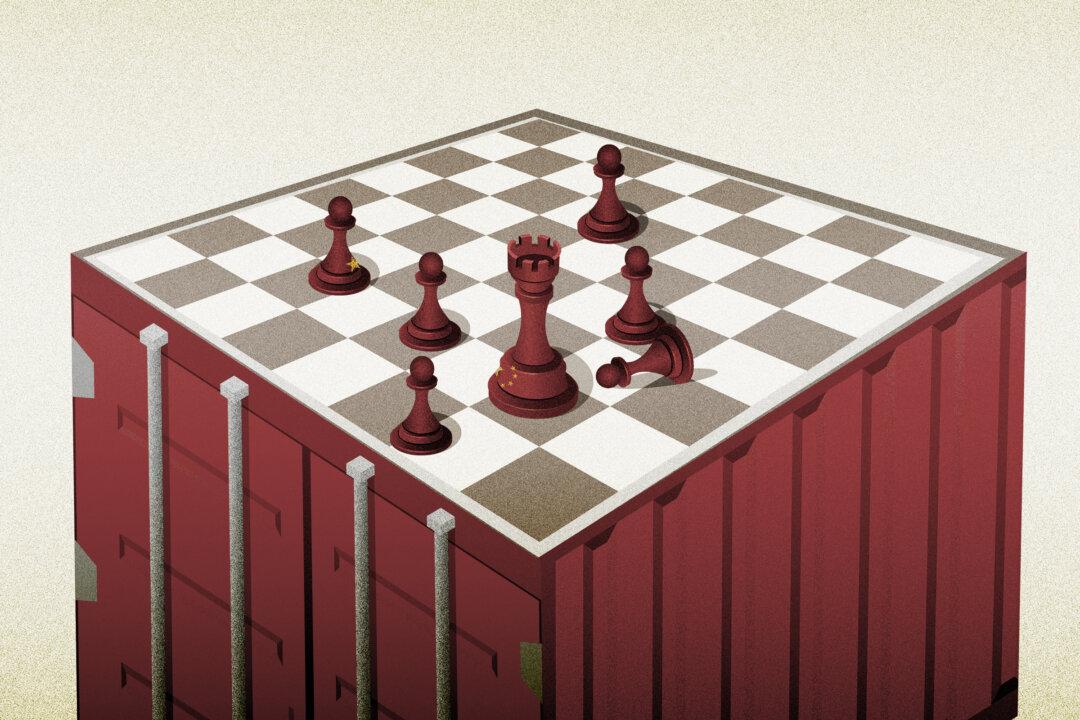HANOI, Vietnam—During his visit to Vietnam, President Joe Biden stopped by the John Sidney McCain III Memorial on Sept. 11 to honor his late friend and colleague Sen. John McCain, whose plane was shot down over Hanoi in 1967 during the Vietnam War.
President Biden arrived in Vietnam on Sept. 10 after finishing his meetings at the G20 summit in India. During his two-day visit to Hanoi, Vietnam’s capital, the president met with Communist Party General Secretary Nguyen Phu Trong and other key Vietnamese leaders.
Before departing, President Biden visited the memorial in downtown Hanoi, a stone sculpture of a person with arms raised and head lowered.
The president touched the wreath and bowed his head.
“I miss him. He was a good friend,” President Biden said of McCain.
Before leaving the site, he left one of his command coins at the memorial and saluted.
At the age of 31, McCain was a Navy lieutenant commander when the North Vietnamese shot down his Skyhawk dive bomber over Hanoi in 1967. He was seriously injured and captured. He was a prisoner of war until 1973.
New Partnership
Upon his arrival, President Biden participated in a bilateral meeting with the Communist Party leader Mr. Nguyen, and both leaders formally announced an elevated partnership between the two countries, sending a strong message to China. The United States has been upgraded to the highest level of relationship, called “comprehensive strategic partner.”
Only China, Russia, India, and South Korea had reached this level of partnership with Hanoi ahead of the United States.
During a news conference following his meeting, President Biden described the visit as “historic” and praised the transformation of relations between the two countries from “conflict to normalization.”
Just days after the latest clash involving Chinese vessels, the leaders on Sept. 11 also warned against the “threat or use of force” in the disputed South China Sea.
“The leaders underscored their unwavering support for the peaceful resolution of disputes in accordance with international law, without the threat or use of force,” President Biden and Mr. Nguyen said in a joint statement.
On Sept. 11, the U.S. president also met with other key Vietnamese leaders, including Prime Minister Pham Minh Chinh and President Vo Van Thuong. He later participated in a state luncheon with Mr. Vo at the Presidential Palace in Hanoi.
During the lunch, President Biden said it was a day that “may have seemed impossible not that long ago.” He predicted that the new relationship would create “boundless possibilities ahead.”
President Biden and Vietnamese leaders also held meetings with company CEOs, and both countries agreed to deepen cooperation in critical and emerging technologies, including semiconductor supply chains.
The leaders discussed business, economic ties, and Vietnam’s 2045 goal of becoming a high-income nation, according to the White House. They addressed technology collaboration and Vietnam’s clean-energy transition plan under the new elevated partnership.

During a news conference on Sept. 10, President Biden repeatedly stated that the purpose of the Vietnam trip “was less about containing China.” He emphasized the importance of “stability” in the Indo–Pacific region.
“The United States is a Pacific nation, and we’re not going anywhere,” he said.
President Biden concluded his meetings in Hanoi and departed for Alaska, where he was set to participate in a 9/11 commemoration with military families in Anchorage.







